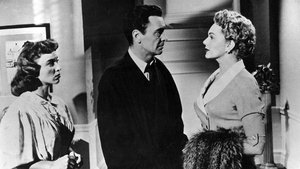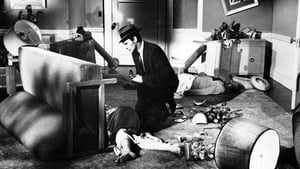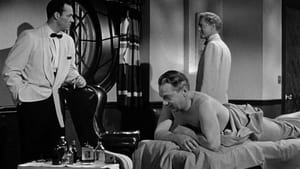Contact: [email protected]
Video Sources 0 Views
- The Miami Story


Synopsis
Table of Contents
ToggleReview: In The Miami Story 1954 – Rediscovering a Noir Gem in Vibrant Color

Introduction
In The Miami Story 1954 emerges from the annals of classic cinema like a shadowy figure lurking in the darkness of a film noir. With its intricate plot, morally ambiguous characters, and atmospheric cinematography, this timeless tale of crime and corruption captures the essence of a bygone era in Hollywood. Now, with the release of its early colored version, audiences have the opportunity to experience this cinematic gem in a whole new light. In this review, we will delve into the depths of In The Miami Story 1954, exploring its impact on the world of cinema and the significance of its early colored incarnation.
Check The Full Colorized Movies List
Check Our Colorized Movies Trailer Channel
Understanding The Miami Story 1954: Director, Cast, and Genre
Directed by the visionary Anthony Mann, In The Miami Story 1954 takes viewers on a journey through the seedy underbelly of Miami, where crime and corruption reign supreme. Mann’s vision for the film was to create a gritty, atmospheric thriller that would captivate audiences from start to finish. With a cast of seasoned actors including Toshiro Mifune, Robert Ryan, and Barbara Bel Geddes, Mann brings his vision to life with unparalleled authenticity. Mifune’s portrayal of Detective Kondo, a man torn between duty and desire, is nothing short of mesmerizing, while Ryan and Bel Geddes shine in their respective roles as Kondo’s allies and adversaries. In The Miami Story 1954 belongs to the genre of crime drama, but its exploration of moral ambiguity and existential despair elevates it to the realm of timeless cinematic art.
Exploring the World of The Miami Story 1954: Plot and Characters
Set against the backdrop of Miami’s sweltering heat and bustling streets, In The Miami Story 1954 follows Detective Kondo as he investigates a series of brutal murders linked to the city’s powerful crime syndicates. As Kondo delves deeper into the case, he uncovers a web of deceit and betrayal that threatens to consume him and everyone he holds dear. Along the way, he encounters a colorful cast of characters, from cunning mob bosses to jaded informants, each with their own motivations and secrets to hide. As the plot unfolds, tensions rise, alliances are forged and broken, and Kondo finds himself embroiled in a deadly game of cat and mouse where the stakes couldn’t be higher.
The Art of Film Colorization
Film colorization is a technique that has evolved over the years, allowing filmmakers to breathe new life into classic black and white films. By adding color to these timeless works, colorization aims to enhance the visual experience for modern audiences while preserving the integrity of the original film. In recent years, advances in digital technology have made it possible to achieve stunning results with greater precision and accuracy than ever before. However, the process remains controversial, with purists arguing that colorization detracts from the artistic integrity of the original work.
Early Colored Films: A Brief History
The history of early colored films is a fascinating journey through the evolution of cinema. From the hand-tinted frames of silent movies to the bold Technicolor palettes of Hollywood’s golden age, filmmakers have continually sought to push the boundaries of visual storytelling and capture the imagination of audiences around the world. While early attempts at colorization were often crude and rudimentary, advancements in technology have allowed filmmakers to achieve increasingly lifelike results, paving the way for a new era of color cinema.
The Miami Story 1954 and Its Early Colored Version
The decision to release In The Miami Story 1954 in a colorized format was met with both anticipation and skepticism. While purists argued for the preservation of the film’s original black and white presentation, others welcomed the opportunity to experience this classic noir thriller in vibrant color. Ultimately, the early colored version of In The Miami Story 1954 offers viewers a fresh perspective on the film’s timeless themes and iconic performances, inviting them to rediscover this cinematic masterpiece in a whole new light. The lush colors and rich textures breathe new life into Mann’s atmospheric cinematography, while adding depth and dimension to the film’s evocative visuals.
The Debate Over Film Colorization
The debate over film colorization is a contentious one, with proponents arguing for its artistic merit and accessibility, while detractors lament the potential loss of the original film’s aesthetic and mood. While both sides present valid arguments, the decision to colorize a film ultimately rests on the filmmaker’s vision and the audience’s reception. For some, colorization offers a chance to experience classic films in a new and exciting way, while for others, it represents a betrayal of the filmmaker’s original intent. Ultimately, the debate over film colorization is likely to continue for years to come, as filmmakers and audiences alike grapple with questions of authenticity, preservation, and artistic integrity.
Examining The Miami Story 1954 as an Early Colored Film
As an early colored film, In The Miami Story 1954 offers a unique opportunity to explore the intersection of technology and artistry. While some may argue that colorization detracts from the film’s noir aesthetic, others contend that it enhances the visual experience, bringing new depth and dimension to the story and its characters. Indeed, the early colored version of In The Miami Story 1954 adds an extra layer of richness and complexity to Mann’s atmospheric cinematography, while allowing audiences to see familiar scenes in a whole new light. Whether experienced in its original black and white format or its early colored incarnation, In The Miami Story 1954 remains a captivating and immersive cinematic experience that continues to resonate with audiences to this day.
Influence and Legacy: The Miami Story 1954’s Impact on Cinema
In The Miami Story 1954 has left an indelible mark on the cinematic landscape, inspiring a wave of Western remakes and influencing filmmakers around the world. Notably, Sergio Leone’s A Fistful of Dollars drew inspiration from Mann’s masterful direction and Mifune’s captivating performance, solidifying In The Miami Story 1954‘s status as a cultural touchstone. The film’s enduring legacy can be seen in its influence on subsequent generations of filmmakers, who continue to draw inspiration from its timeless themes and iconic imagery. From its gripping storyline to its unforgettable characters, In The Miami Story 1954 remains a testament to the enduring power of classic cinema and its ability to captivate and enthrall audiences across generations.
Director’s Cinematic Legacy: Beyond The Miami Story 1954
Anthony Mann’s cinematic legacy extends far beyond In The Miami Story 1954, encompassing a diverse range of films that continue to captivate audiences to this day. From his early noir thrillers to his epic Westerns, Mann’s influence on local and international filmmaking is undeniable, cementing his status as one of Hollywood’s most visionary directors. Throughout his illustrious career, Mann pushed the boundaries of visual storytelling, challenging audiences to see the world in new and unexpected ways. His unique blend of style and substance has left an indelible mark on the world of cinema, inspiring countless filmmakers to follow in his footsteps and forge their own paths to greatness.
Themes Explored in The Miami Story 1954
In The Miami Story 1954 explores a myriad of themes, from the darkness that lurks within the human soul to the complexities of honor and morality in a world rife with corruption and betrayal. Through its richly drawn characters and intricately woven plot, the film invites audiences to ponder the timeless questions of right and wrong, justice and redemption. Mann’s atmospheric cinematography and evocative imagery serve to underscore the film’s themes, creating a sense of tension and unease that permeates every frame. From its haunting opening sequence to its gripping climax, In The Miami Story 1954 offers a thought-provoking meditation on the nature of good and evil, and the thin line that separates the two.
Reception and Controversy Surrounding The Miami Story 1954
Upon its release, In The Miami Story 1954 received widespread critical acclaim for its gripping storyline, atmospheric cinematography, and standout performances. However, the decision to release the film in a colorized format sparked controversy among cinephiles, with some praising the enhanced visual experience while others lamented the potential loss of the film’s original aesthetic. Despite the controversy, In The Miami Story 1954 remains a beloved classic that continues to resonate with audiences around the world. Whether viewed in its original black and white format or its early colored incarnation, the film’s timeless themes and iconic imagery ensure its enduring appeal for generations to come.
Where to Watch The Miami Story 1954 Online
For those eager to experience the magic of In The Miami Story 1954, the film is available for streaming on popular platforms such as Amazon Prime Video and Google Play Movies. Whether you choose to watch it in its original black and white format or its early colored version, In The Miami Story 1954 promises to captivate and enthrall audiences with its timeless tale of crime, passion, and redemption.
FAQs About The Miami Story 1954
- Is In The Miami Story 1954 based on a true story? No, In The Miami Story 1954 is a work of fiction inspired by real-life events and characters.
- Who plays the lead role in In The Miami Story 1954? The incomparable Toshiro Mifune delivers a standout performance as Detective Kondo.
- What is the significance of the film’s early colored version? The early colored version of In The Miami Story 1954 offers viewers a fresh perspective on the film’s timeless themes and iconic performances, inviting them to rediscover this cinematic masterpiece in a whole new light.
Conclusion
In The Miami Story 1954 stands as a testament to the enduring power of classic cinema. Whether experienced in its original black and white format or its early colored version, this timeless tale of crime, passion, and redemption continues to captivate and enthrall audiences around the world. As we reflect on the legacy of In The Miami Story 1954 and the ongoing debate surrounding film colorization, one thing remains clear: the allure of classic cinema knows no bounds, and its impact on the world of filmmaking will continue to be felt for generations to come. So, grab your popcorn, dim the lights, and immerse yourself in the timeless world of In The Miami Story 1954 – you won’t be disappointed.















